Ribbon Seal
Ribbon seals are fewer in number than the more common ringed and bearded seals and may be less impacted by sea ice loss because they are pelagic (live at sea) in the summer. If they are pelagic, how do they sleep? They can sleep a number of ways: on their backs or sides, or like buoys in a vertical position. I found it interesting that the seal can close its nostrils similar to how whales close their blowholes.
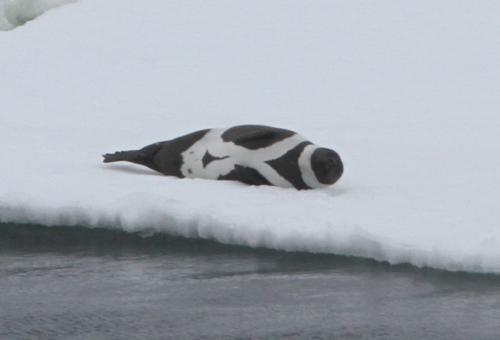
Walrus
Before 10 AM Alaskan time, roughly 130 walrus were spotted as we arrived at sampling station H107. Most were females with calves swimming in the water, with a few small groups resting on ice floes. The sea ice that lingers around Hanna Shoal is a refugia for the walruses, providing them a platform on which to rest near their food (clams and worms) that live in the sediment of the sea floor.
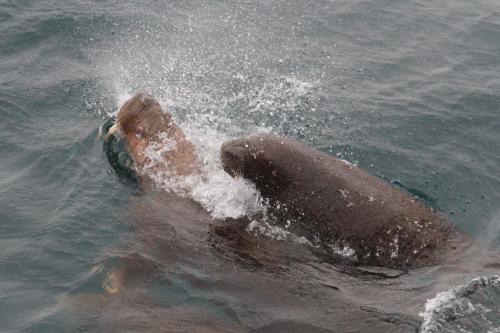
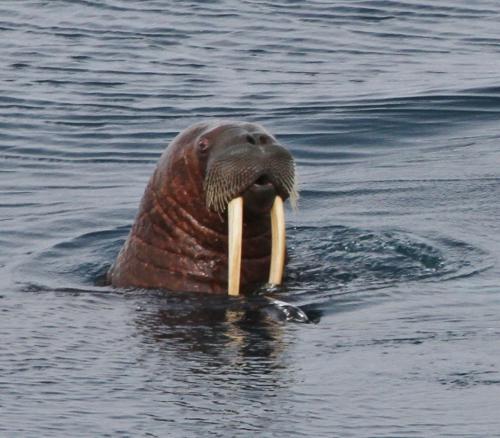
Gray Whales
The gray whale is a conservation success story, as the only whale species that has been removed from the endangered species list. Gray whales summer from the Bering to the Chukchi Sea, and have been documented in these waters at least since the 1950's. In the 1980s, more whales summered in the northern Bering Sea than do currently, but then (as now) they were common along the shore in the Chukchi Sea, especially from Wainwright to Barrow. A large aggregation of feeding gray whales (~ 300 animals) was seen as we transited through the southern Chukchi Sea to the Hanna Shoal study area earlier in the cruise.
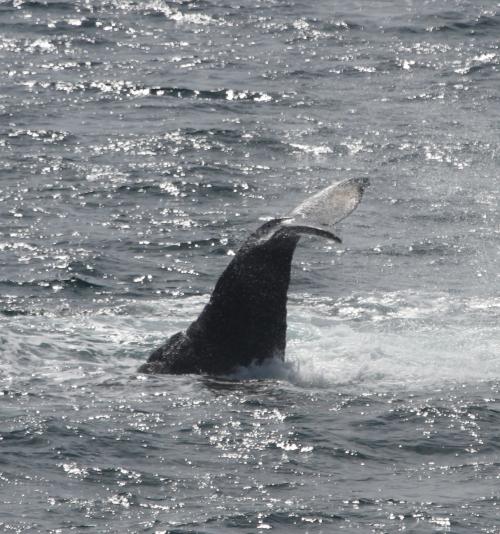
Polar Bears
There are 19 populations of polar bears in the Arctic. The bears in the Chukchi Sea are maintaining their body condition and populations size, but those in the Beaufort SeaThe Beaufort Sea lies to the north of Alaska and the Yukon and Northwest Territories. area are not doing as well. With climate change, brown bears appear to be moving north and reports of 'hybrid bears' suggest that they are mating opportunistically with polar bears. In the ABC (Admiralty, Baranof, and Chichagof) islands, in Southeast Alaska, there is a population of brown bears that have been isolated for about 125,000 years. Interestingly, these brown bears are more closely related to polar bears than to any other brown bears despite the 900 mile separation between the ABC islands and the nearest range of the polar bears.
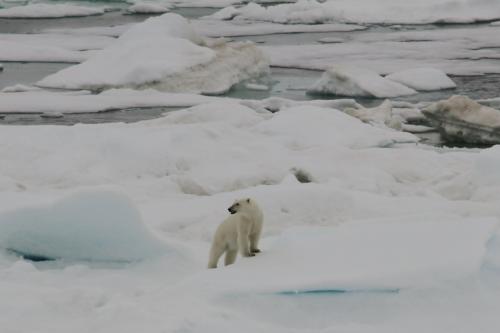
Regulating bodies
The US Fish and Wildlife Service (USFWS) has jurisdiction over walrus, polar bears, manatees, and sea otters. All other aquatic and marine mammals are under the watch of the National Oceanic and Atmospheric Association (NOAA).
Many Alaskan coastal communities depend on marine mammals for subsistence, but changing sea ice conditions are forcing hunters to adapt new strategies. Native Alaskans have a strong connection to the ocean. The ocean is their garden and a source of both food and cultural connection. NOAA, USFWS and Native hunter associations are working together to maintain healthy marine mammal populations.
Special Thanks
This Journal would not be possible with out the help of Dr. Sue Moore from NOAA who gave me insight into arctic mammals. All pictures posted on today's blog were compliments of Master Chief Tim Sullivan aboard the USCGC Healy.
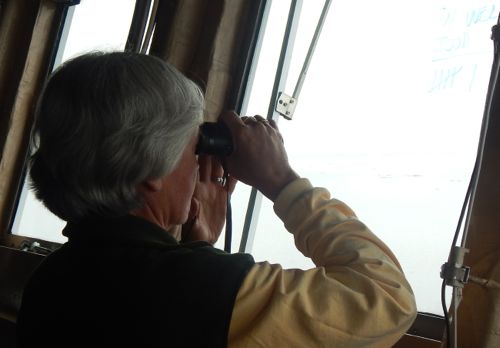
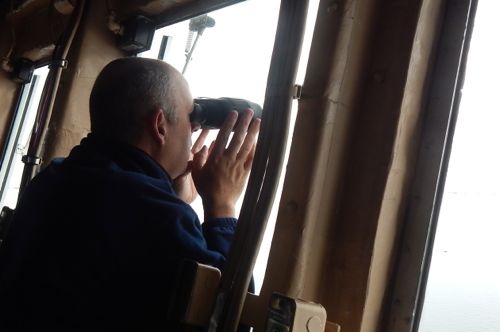


Comments